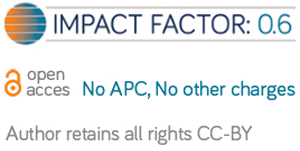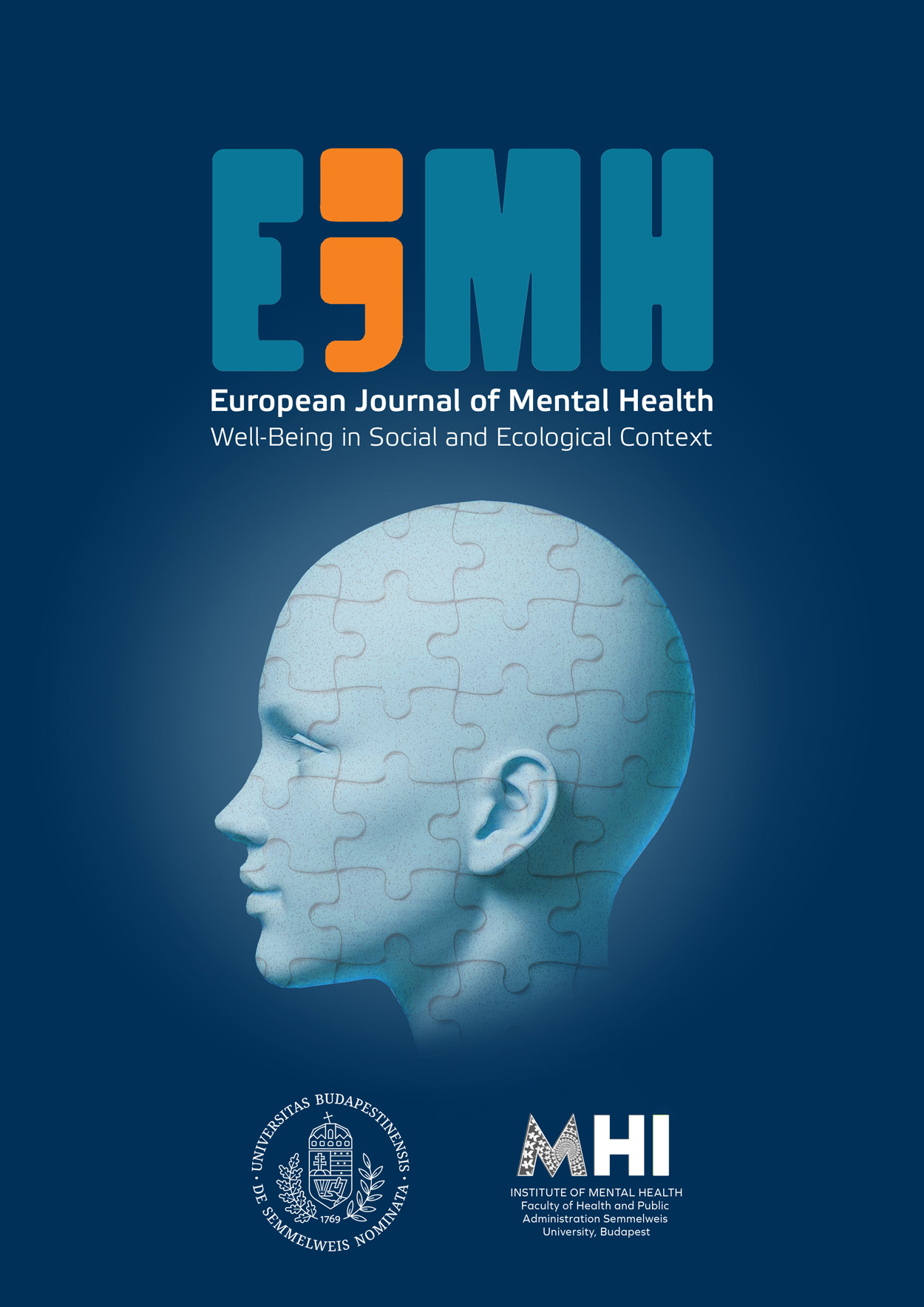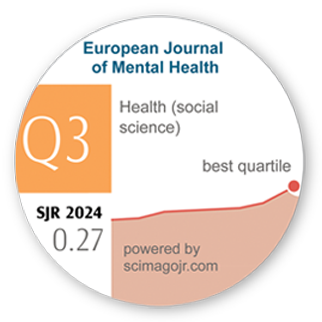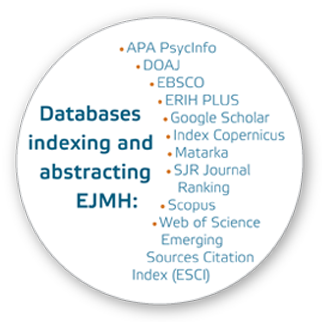Features of Anesthesiologists-Reanimatologists’ Emotional States in Different COVID-19 Pandemic Periods in Russia
DOI:
https://doi.org/10.5708/EJMH.17.2022.2.9Keywords:
COVID-19 pandemic, anesthesiologists-reanimatologists, mental health, emotional state, anxietyAbstract
Introduction: The COVID-19 pandemic is one of the most stressful events in recent times. Medical professionals, including anesthesiologists-reanimatologists, suffered the main blow in this difficult and stressful environment.
Aims: This study aimed at identifying the features of anesthesiologists-reanimatologists’ emotional states in different COVID-19 pandemic periods.
Methods: The study was conducted through an anonymous questionnaire among anesthesiologists-reanimatologists in two periods. In the First stage – which was carried out in May 2020 (during the first COVID-19 pan¬demic wave) – 58 anesthesiologists-reanimatologists in the Arkhangelsk region took part. During the Second segment – which took place in October 2020 (in the second COVID-19 pandemic wave) – 43 anesthesiologists-reanimatologists were examined. Repeated questioning was carried out among the same participants.
Results: In October 2020, compared to May, the number of doctors who noted a high intensity of professional activity increased. Regardless of the study period, one-third of the subjects experienced constant pronounced anxiety. Anesthesiologists-reanimatologists, whose professional activity was directly related to the patients in COVID-19 care, noted a poorer emo¬tional state more frequently in October, accompanied by anxiety, depressed mood, irritability and a high burnout level, which may indicate a depletion of internal resources in this group.
Conclusions: The study results showed that for anesthesiologists-reanimatologists, a further depletion of emotional resources accompanied the second pandemic wave. The anesthesiologists-reanimatologists’ emotional state was mediated by a number of social and gender factors, as well as specific labor organization features.
References
Allan, S. M., Bealey, R., Birch, J., Cushing, T., Parke, S., Sergi, G., Bloomfield M., & Meiser-Stedman, R. (2020). The prevalence of common and stress-related mental health disorders in healthcare workers based in pandemic-affected hospitals: A rapid systematic review and meta-analysis. European Journal of Psychotraumatology, 11(1), Article 1810903.
http://dx.doi.org/10.1080/20008198.2020.1810903
Almaghrabi, R. H., Alfaradi, H. A., Hebshi, W. A. A., & Albaadani, M. M. (2020). Healthcare workers experience in dealing with Coronavirus (COVID-19) pandemic. Saudi Medical Journal, 41(6), 657–660.
http://dx.doi.org/10.15537/smj.2020.6.25101
Almeida, M., & DeCavalcante, G. (2021). Burnout and the mental health impact of COVID-19 in anesthesiologists: A call to action. Journal of Clinical Anesthesia, 68, Article 110084.
http://dx.doi.org/10.1016/j.jclinane.2020.110084
Alnofaiey, Y. H., Alshehri, H. A., Alosaimi, M. M., Alswat, S. H., Alswat, R. H., Alhulayfi, R. M., Alghamdi, M. A., & Alsubaie, R. M. (2020). Sleep disturbances among physicians during COVID-19 pandemic. BMC Research Notes, 13, Article 493.
http://dx.doi.org/10.1186/s13104-020-05341-6
Bolobokina, T. A., Dementiev, A. A., Shatrova, N.V., & Rudakova, M. N. (2020).Vliyaniye raboty v usloviyakh pandemii koronavirusnoy infektsii na funktsional’noye sostoyaniye tsentral’noy nervnoy sistemy meditsinskikh rabotnikov stantsii skoroy meditsinskoy pomoshchi [Influence of work under the conditions of the COVID-19 pandemic on the functional state of the central nervous system of medical workers of the emergency station]. Vestnik novykh meditsinskikh tekhnologiy [Journal of New Medical Technologies, eEdition]. (6), 81–86.
http://dx.doi.org/10.24411/2075-4094-2020-16744
Chen, Y., Zhou, H., Zhou, Y., & Zhou, F. (2020). Prevalence of self-reported depression and anxiety among pediatric medical staff members during the COVID-19 outbreak in Guiyang, China. Psychiatry Research, 288, Article 113005.
http://dx.doi.org/10.1016/j.psychres.2020.113005
Correia, M. I. T. D., Ramos, F. R., & Bahten, C. V. (2020). Os cirurgiões e a pandemia do COVID-19 [The surgeons and the COVID-19 pandemic]. Revista Do Colégio Brasileiro de Cirurgiões 47, Article e20202536.
http://dx.doi.org/10.1590/0100-6991e-20202536
Di Tella, M., Romeo, A., Benfante, A., & Castelli, L. (2020). Mental health of healthcare workers during the COVID-19 pandemic in Italy. Journal of Evaluation in Clinical Practice, 26(6), 1583–1587.
http://dx.doi.org/10.22541/au.158878917.77777713
Galbraith, N., Boyda, D., Mcfeeters, D., & Hassan, T. (2020). The mental health of doctors during the COVID-19 pandemic. BJPsych Bulletin, 45(2), 93–97.
http://dx.doi.org/ 10.1192/bjb.2020.44
Fitzpatrick, K., Patterson, R., Morley, K., Stoltzfus, J., & Stankewicz, H. (2020). Physician wellness during a pandemic. Western Journal of Emergency Medicine: Integrating Emergency Care with Population Heatlth, 21(6), 83–87.
http://dx.doi.org/10.5811/westjem.2020.7.48472
Korehova, M. V., Kirov, M. Y., Novikova, I. A., & Soloviev, A. G. (2020). Emotsional’noye sostoyaniye vrachey-anesteziologov-reanimatologov v period pandemii COVID-19 [Emotional state of anesthesiologists and intensive care specialists throughount the COVID-19 pandemic]. Anesteziologiya i reanimatologiya [Anesthesiology and Reanimatology], 6(2), 61–67.
http://dx.doi.org/10.17116/anaesthesiology202006261
Koshkin, V. B., Goncharevich, A. Y., & Kovalevа, O. A. (2015). Sindrom professional’noy dezadaptatsii vrachey i medsester otdeleniya anesteziologii i reanimatsii [Syndrome of professional maladaptation of doctors and nurses of the Department of Anesthesiology and Resuscitation]. Vestnik Khakasskogo gosudarstvennogo universiteta im. N.F. Katanova [Bulletin of the Khakass State University named after N. F. Katanova], 12, 59–61.
https://www.elibrary.ru/item.asp?id=25791831
Krasavtseva, Y. V., Kiseleva, M. G., Kasian, G. R., & Pushkar, D. Y. (2020). Otsenka psikhologicheskogo statusa vrachey-urologov vo vremya pandemii COVID-19 [Assessment of the psychological status of urologists during the COVID-19 pandemic]. Urologiya [Urology] 3, 5–9.
http://dx.doi.org/10.18565/urology.2020.3.5-9
Kravchenko, Y. V., Demkin, A. D., & Kobryanova, I. V. (2020). Profilaktika stress-assotsiirovannykh rasstroystv u meditsinskogo personala pri rabote v neblagopriyatnoy epidemiologicheskoy obstanovki [Prevention of stress-associated disorders in medical personnel when working in an unfavorable epidemiological environment]. Izvestiya Rossiyskoy Voyenno-meditsinskoy akademii [Bulletin of the Russian Military Medical Academy], 39(s3–4), 136–140.
http://onkto.ru/images/docs/demkin-2020-1.pdf
Kühlmeyer K., Kuhn, E., Knochel, K., Hildesheim, H., Witt, V. D., Friedrich, O., & Rogge, A. (2020). Moralischer Stress bei Medizinstudierenden und ärztlichen Berufseinsteigenden: Forschungsdesiderate im Rahmen der COVID-19- Pandemie [Moral distress in medical students and young professionals: Research desiderata in the context of the COVID-19 pandemic]. Bundesgesundheitsblatt - Gesundheitsforschung Gesundheitsschutz, 63, 1483–1490.
http://dx.doi.org/ 10.1007/s00103-020-03244-2
Lai, J., Ma, S., Wang, Y., Cai, Z., Hu, J., Wei, N., Wu, J., Du, H., Chen, T., Li, R., Tan, H., Kang, L., Yao, L., Huang, M., Wang, H., Wang, G., Liu, Z., & Hu, S. (2020). Factors associated with mental health outcomes among health care workers exposed to coronavirus disease. JAMA Network Open, 3(3), Article e203976.
http://dx.doi.org/10.1001/jamanetworkopen.2020.3976
Lebedinsky, K. M., Domanskaya, I. A., & Mazurok, V. A. (2004). Gigiyena truda v anesteziologii i reanimatologii: zadachi i vozmozhnosti poslediplomnogo obrazovaniya [Occupational health in anesthesiology and intensive care: Tasks and opportunities for postgraduate education]. Sb. dokl. XXXVII nauch.konf. “Optimizatsiya bol'nichnoy sredy sredstvami novykh tekhnologiy”. Sankt-Peterburgskaya meditsinskaya akademiya poslediplomnogo obrazovaniya [Collection of reports of the XXXVII scientific conference “Optimization of the hospital environment by means of new technologies”. St. Petersburg Medical Academy of Postgraduate Education], 137–141.
Mamas, A. N., & Kosarevskaya, T. A. (2010). Issledovaniye sindroma emotsional’nogo vygoraniya u vrachey anesteziologov-reanimatologov [The study of burnout syndrome among anesthetist-resuscitation doctors]. Novosti khirurgii [Surgery News], 18(6), 75–81.
https://cyberleninka.ru/article/n/issledovanie-sindroma-emotsionalnogo-vygoraniya-u-vrachey-anesteziologov-reanimatologov
Matyushkina, E. Y., Mikita, O. Y., & Kholmogorova, A. B. (2020). Uroven’ professiona’nogo vygoraniya vrachey-ordinatorov, prokhodyashchikh stazhirovku v skoropomoshchnom statsionare: dannyye do situatsii pandemii [Burnout level in medical residents doing internship in Emergency Medicine Hospital before the pandemic]. Konsul'tativnaya psikhologiya i psikhoterapiya [Counseling Psychology and Psychotherapy], 28(2), 46–69.
http://dx.doi.org/10.17759/cpp.2020280203
Neto, M. L. R., Almeida, H. G., Esmeraldo, J. D., Nobre, C. B., Pinheiro, W. R., de Oliveira, C. R. T., da Costa Sousa, I., Lima, O. M. M. L., Lima, N. N. R., Moreira, M. M., Lima, C. K. T., Gonçalves Júnior, J., & Da Silvaa, C. G. L. (2020). When health professionals look death in the eye: The mental health of professionals who deal daily with the 2019 coronavirus outbreak. Psychiatry Research, 288, Article 112972.
http://dx.doi.org/10.1016/j.psychres.2020.112972
Nyssen, A. S., Hansez, I., Baele, P., Lamy, M., & De.Keyser, V. (2003). Occupational stress and burnout in anaesthesia. British Journal of Anaesthesia, 90(3), 333–337.
http://dx.doi.org/10.1093/bja/aeg058
Ornell, F., Halpern, S. C., Kessler. F. H. P., & De Mangalhãez Narvaez, J. C. (2020). The impact of the COVID-19 pandemic on the mental health of healthcare professionals. Cadernos de Saúde Pública, 36(4), Article e00063520.
http://dx.doi.org/10.1590/0102-311x00063520
Ovsyanik, O. A. (2020). Sotsial’no-psikhologicheskiye osobennosti adaptatsii vrachey k vozniknoveniyu pandemii [Socio-psychological specific of doctors’ adaption to the pandemic]. Vestnik Moskovskogo gosudarstvennogo oblastnogo universiteta. Seriya: Psikhologicheskiye nauki [Bulletin of the Moscow State Regional University. Series: Psychological Sciences], 4, 75–81.
http://dx.doi.org/10.18384/2310-7235-2020-4-75-81
Pervichko, E., & Konyukhovskaya, J. (2020). Psikhologicheskoye blagopoluchiye vrachey i meditsinskogo personala v usloviyakh pandemii COVID-19: obzor zarubezhnykh issledovaniy [Psychological well-being of doctors and medical personnel in the context of the COVID-19 pandemic: Overview of foreign studies]. Psikhiatriya, psikhoterapiya i klinicheskaya psikhologiya [Psychiatry, Psychotherapy and Clinical Psychology], 11(3), 595–608.
http://dx.doi.org/10.34883/PI.2020.11.3.016
Petrikov, S. S., Kholmogorova, A. B., Suroegina, A. Y., Mikita, O. Y., Roy, A. P., & Rakhmanina, A. A. (2020). Professional’noye vygoraniye, simptomy emotsional’nogo neblagopoluchiya i distressa u meditsinskikh rabotnikov vo vremya epidemii COVID-19 [Professional burnout, symptoms of emotional disorders and distress among healthcare professionals during the COVID-19 epidemic]. Konsul'ativnaya psikhologiya i psikhoterapiya [Counseling Psychology and Psychotherapy], 28(2), 8–45.
http://dx.doi.org/ 10.17759/cpp.2020280202
Raudenská, J., Steinerová, V., Javůrková, A., Urits, I., Kaye, A. D., Viswanath, O., & Varrassi. G. (2020). Occupational burnout syndrome and post-traumatic stress among healthcare professionals during the novel coronavirus disease 2019 (COVID-19) pandemic. Best Practice & Research Clinical Anaesthesiology, 34(3), 553–560.
http://dx.doi.org/ 10.1016/j.bpa.2020.07.008
Selye, H. (1974). Stress without distress. Lippincott.
Shechter, A., Diaz, F., Moise, N., Anstey, D. E., Ye, S., Agarwal, S., Birk, J. L., Brodie, D., Cannone, D. E., Chang, B., Claassen, J., Cornelius, T., Derby, L., Dong, M., Givens, R. C., Hochman, B., Homma, S., Kronish, I. M., Lee, S. A. J.,… Abdalla. M. (2020). Psychological distress, coping behaviors, and preferences for support among New York healthcare workers during the COVID-19 pandemic. General Hospital Psychiatry, 66, 1–8.
http://dx.doi.org/10.1016/j.genhosppsych.2020.06.007
Wang, J., Hu, B., Peng, Z., Song, H., Cai, S., Rao, X., Li, L., & Li., J. (2021). Prevalence of burnout among intensivists in mainland China: A nationwide cross-sectional survey. Critical Care, 25, Article 8.
http://doi.org/10.1186/s13054-020-03439-8
Wu, Y., Wang, J., Luo, C., Hu, S., Lin, X., Anderson, A. E., Bruera, E., Yang, X., Wei, S., & Qian, Y. (2020). A comparison of burnout frequency among oncology physicians and nurses working on the frontline and usual wards during the COVID-19 epidemic in Wuhan, China. Journal of Pain and Symptom Management, 60(1), e60–e65.
http://dx.doi.org/10.1016/j.jpainsymman.2020.04.008
Zhou, A. Y., & Panagioti, M. (2020). Mental health and the medical profession during the COVID-19 pandemic. Occupational Medicine, 70(5), 362–363.
http://dx.doi.org/10.1093/occmed/kqaa076






